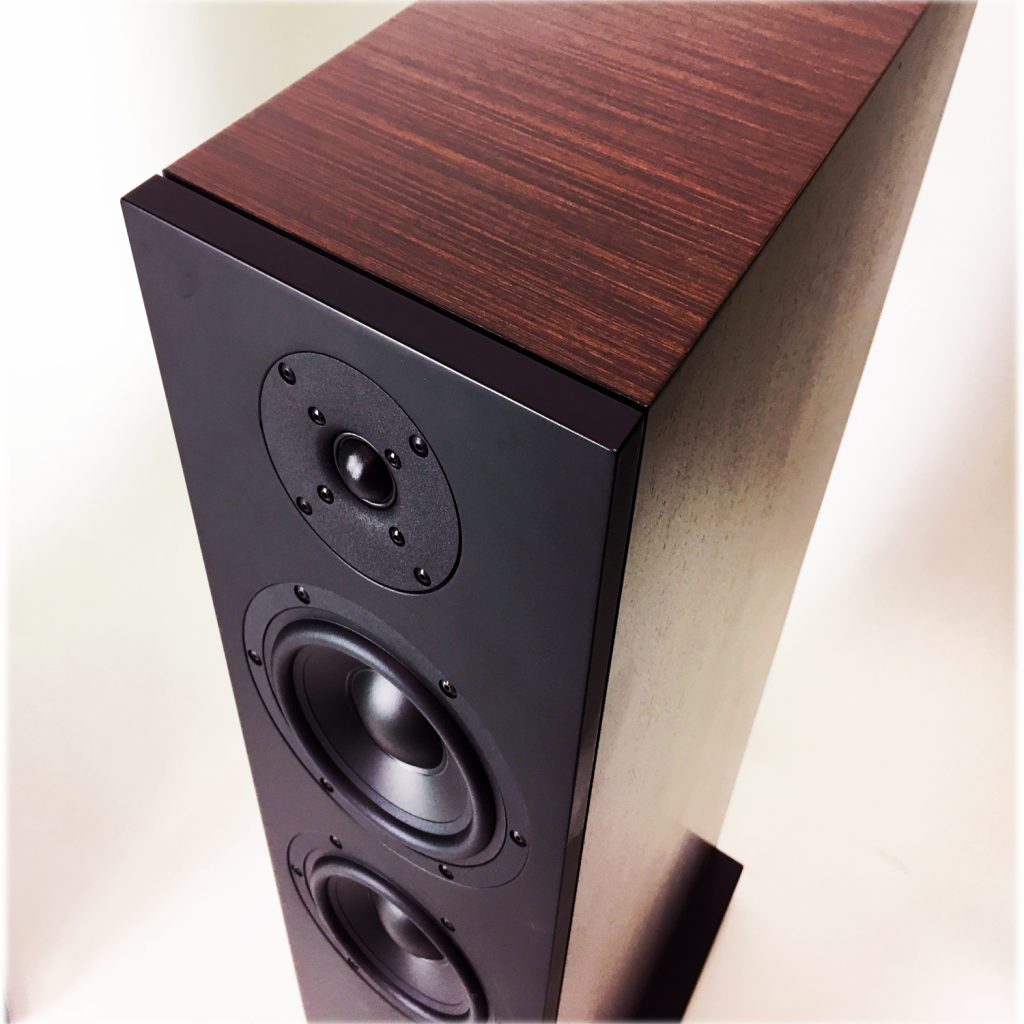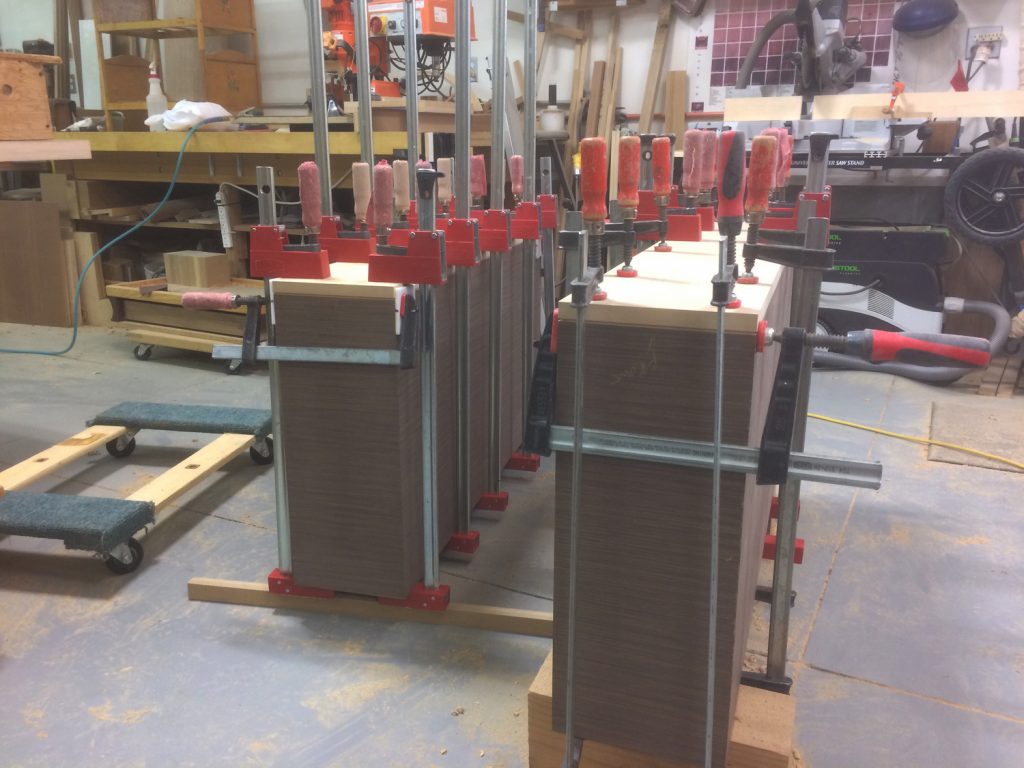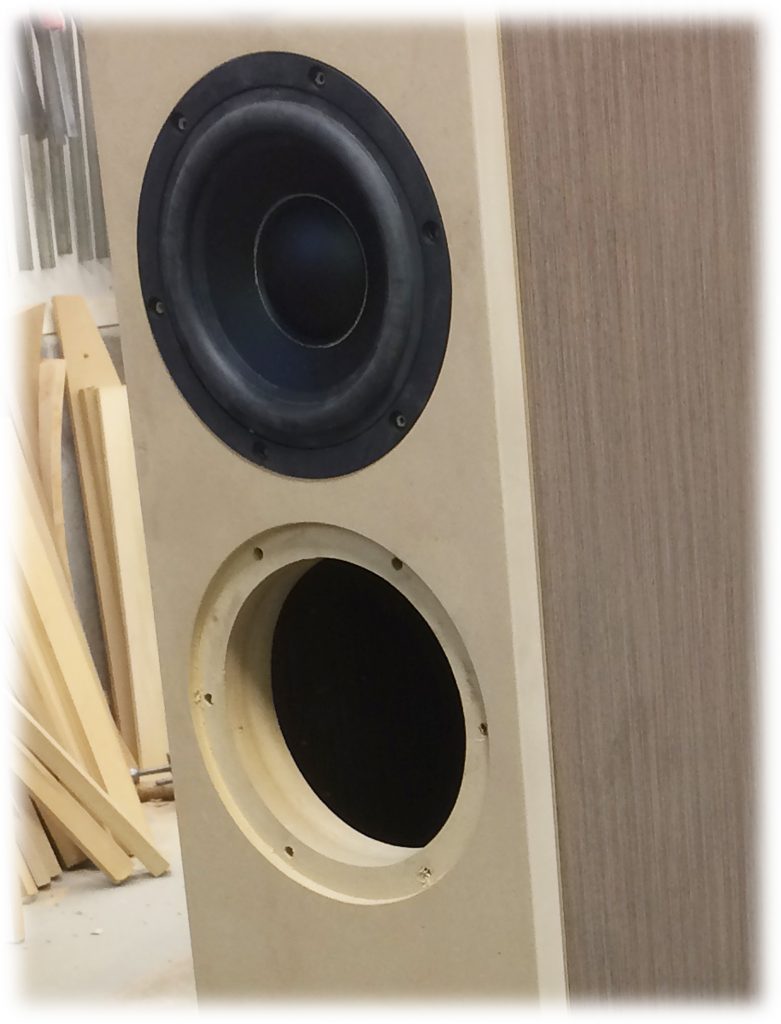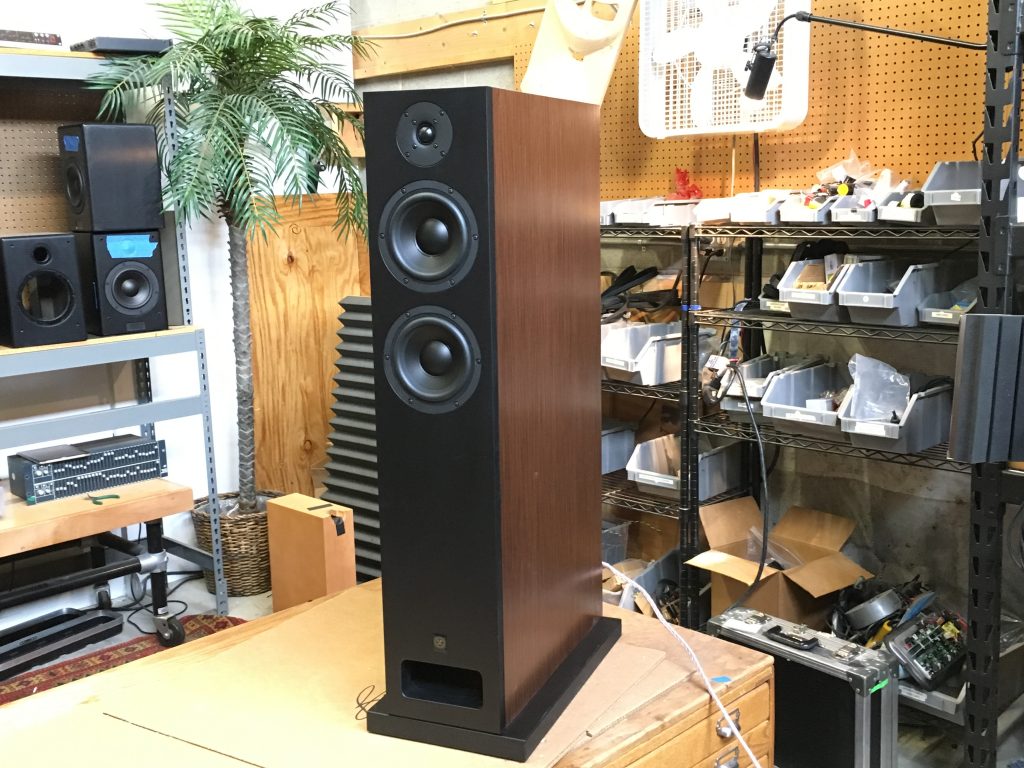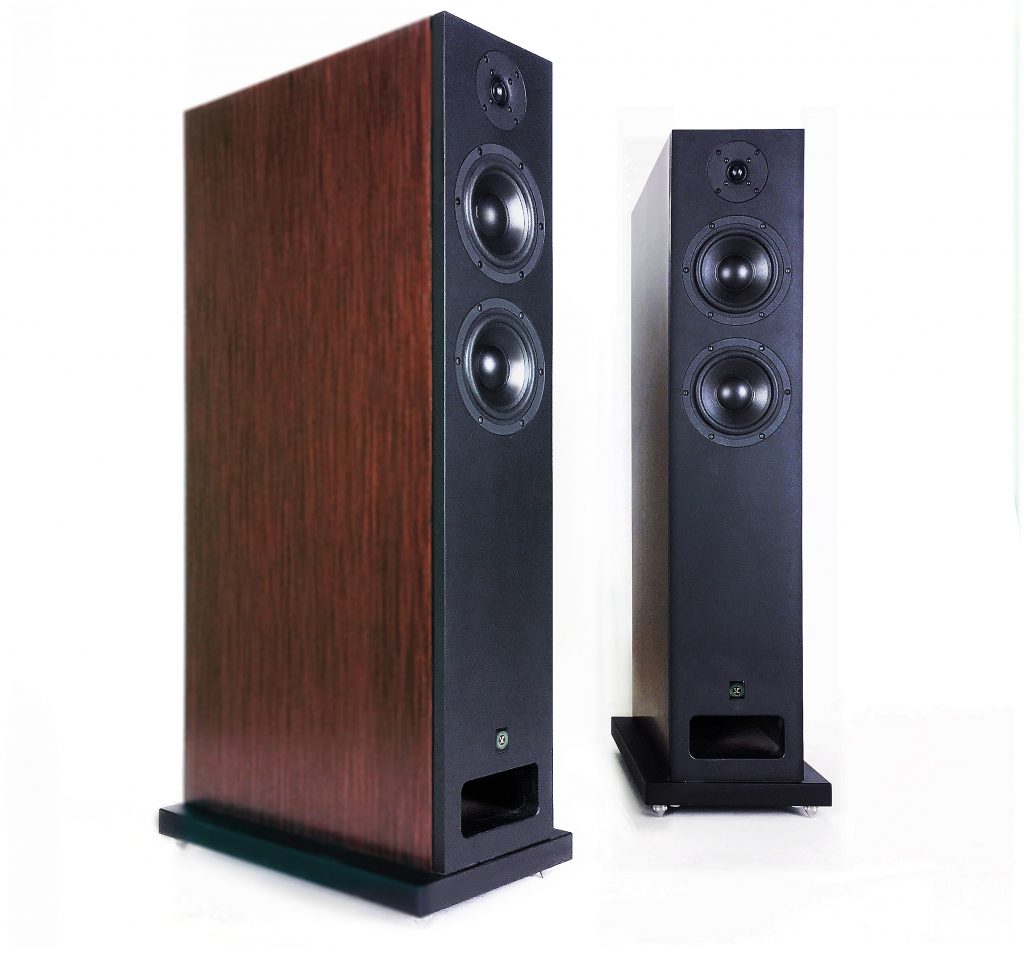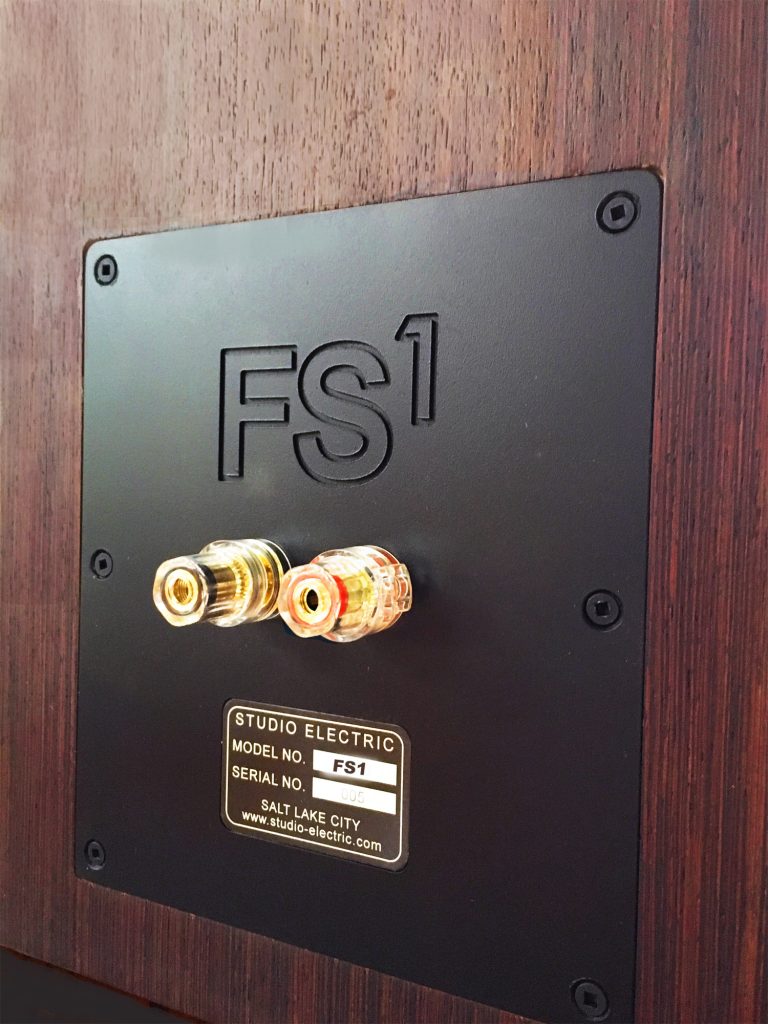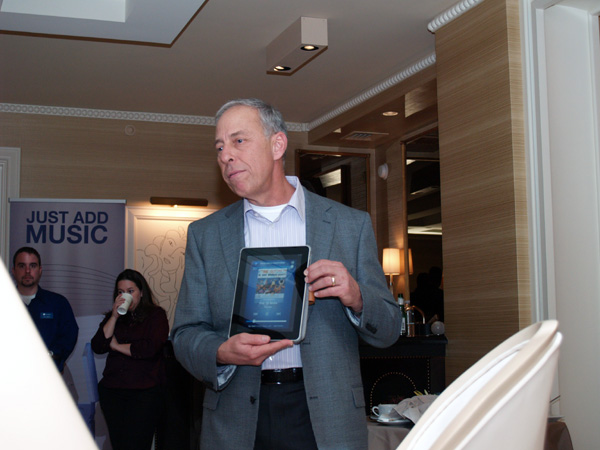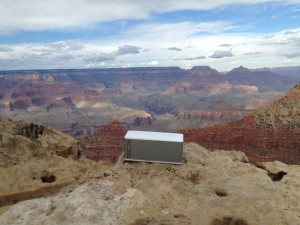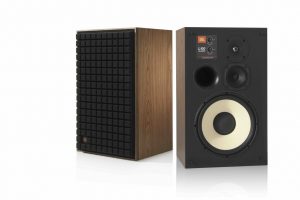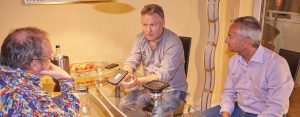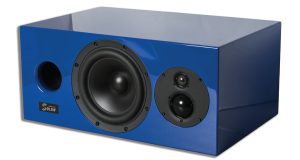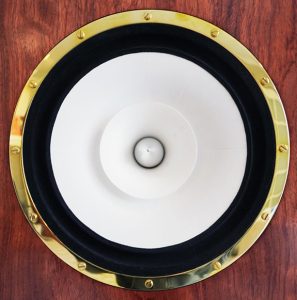I've used the same pair of speakers for 22 years. (And they still surprise me.)
They're nameless and were made for me by Richard Marsh: a pair of Dynaudio cabinets with Dynaudio drivers and crossovers built by Richard. He said I should call them DS-something—so how about Marsh/Dynaudio DS-1? He'd made a pair for himself, which I heard in December of '94, and he was willing to build another pair. They were not cheap, even then (that Esotar tweeter runs up there), but I've been very happy with them. They have a small footprint and for a mid-90s speaker, phenomenal resolution and bass—they're pretty good to the low 20s. And I also still own the prototype pair of Snell Type Bs, fondly referred to as "The Refrigerators", for their size, but they haven't been here since late '95. (But jeez, talk about bass—flat to 16Hz is quite something.)
My room is problematic (who's isn't?): built in '59, it's got a beamed ceiling sloping down to a wall that's two-thirds glass, one wall of brick, effectively asymmetrical; it's the classic mid-century modern room—fabulous to occupy, not-so-fabulous for sound. Yes, I could make it all work, but then I'd be blocking the view (which isn't worth it). There were a couple of years when it really did work great, when the system was out in the middle of the space at a diagonal - but life moved on; three people have to share the space.
I've had different speakers in to try, including a pair of Magneplanar 1.7s, and intend to get a pair of 3.7s at some point; just because I think they're so cool and so different from what I'm used to. (I have no hope of ever being able to afford some of the cooler speakers that use a digital room correction circuit, like those Dragonfire Acoustics DRC-1s, which are $30k.)
All of which brings me around to the aftermath of the LA Audio Show. I wrote about it in Copper, and mentioned that the most fun I had was in the room of Studio Electric, listening to their FS1. Studio Electric's David MacPherson and I have been connected via Facebook for a couple of years, but had never met. I wandered into their room at the show to say hello, really not expecting much, and had to practically pull myself out of there—we were playing one reggae tune after another, as well as recordings MacPherson did of the Utah Symphony. I must have spent an hour there. When ye olde, retired, editor Dave Clark suggested that I could get the FS1 for review, I asked the real boss, and she approved.
MacPherson's company is effectively a one-man show: he uses a cabinet shop, and has the drivers made for him, but running the company, it's basically just him (he has a partner on the business end), although he has contractors that he's worked with for quite a long time. He comes from the professional world; he ran a sound company in the Midwest, built speakers there, and worked with the Utah Symphony Orchestra for a few years, as their front-of-house mixer and archivist. He's been doing this, one way or another, for over 40 years.
So how are the speakers, his big ones (for now)? I've been listening to them for a month-and-a-half, and I'm happy to report that they're terrific—especially for the value that they represent. The overall impression that they leave me with is like a small(er) monitor, but with decent low end. Their narrow profile is very smartly chosen, under 9" wide—but they're also nearly 2 feet deep. The speakers are arguably a 3-way, although the mid and low are the same drivers—a pair of 6.5" speakers. Highs go via a 1" soft-dome tweeter. Crossover points are 80Hz and 3kHz.
The choice of using identical drivers to cover two different ranges was an interesting one. In email exchanges, MacPherson had this to say about the design:
"We've had some good success with monitors, and also with our rather unconventional "sphere" series, but had been asked many times to do a conventional floor stander. The logical place to start was with our already proven highX™ mid woofer. I wouldn't call it a full-range driver, but it's very usable from 40Hz to 5kHz, and from 50Hz to 3.5kHz it is superb! The FS1 uses two of them.
"The top woofer is in it's own sealed chamber and is used more or less full range. I've always had good luck with 2 & 1/2 -way-speakers[1] so we worked at incorporating a 2nd highX woofer, using it's own low pass filter, in a separate tuned portion of the enclosure, to enhance the low end of the system. At first, we had considered changing the compliance slightly to optimize the driver for use in a tuned box, but found that the stock unit performed quite well on it's own.
"The lower woofer has a low pass filter. It only runs below 90Hz. The box tuning is optimized for 39 - 60Hz. Essentially the lower woofer is a small sub-woofer. The measured down 6dB point on the lower woofer (with the box tuning) is 37Hz. It falls pretty fast below 34Hz (as you've noticed). Such is the nature of small woofers. I think we got it right for frequencies above that though. The FS1 can hit open E on a bass, and the kick drum hits you in the diaphragm, so I'm pretty happy about that.
"At about the same time as I was drawing up plans for the FS1, our cabinet maker came across a new composite material that incorporates MDF, recycled hardwood elements, and some hemp fiber, to create a material that looks quite a lot like exotic hard wood, uses minimal petroleum products, and qualifies as a "sustainable" wood product. It seemed like a good 21st century speaker cabinet material so we adopted it.
"I won't go into the details on the tweeter, but will say it's a new Danish design based on an old Danish design. As we have in the past, we had ClarityCap in the UK help us with custom value crossover components. "
So what does all this add up to?
They don't impart anything particularly noticeable to the sound, i.e., they change right along with the recording. I found myself instead obsessing over what they DIDN'T do, rather than what they did, trying to discern just where they let me down, so to speak. The most telling example I can think of is literally noise, the space between stations on an FM tuner: it was a shade more lightweight—which has me wondering just how much my own speakers may exaggerate the region (pluses and minuses to everything, right?). But when I went looking for evidence of that lighter character in the music, it was hard to find. Solo piano recordings, whether classical, like Benjamin Grosvenor's two Decca recordings, Dances and Homages, or jazz, like any of Keith Jarrett's records, reveal nothing.
Where you might expect it to fall short, like the opening of Reiner's "Also Sprach Zarathustra", it just shines (ps - the 2nd part, "Von den Hinterweltlern", is to my ears one of the greatest in the symphonic repertoire). Likewise, when I went to old stand-byes like Eno and Byrne's My Life in the Bush of Ghosts—yes, it's a bit different, but also every bit as I thought it was. Same with Jon Hassell's Power Spot, and in particular the track "Miracle Steps" with its (apparently) large drum—but also "Wing Melodies" and "The Elephant and the Orchid"—there's nothing lacking, and everything is floating around the speakers, right where I expected it to be. I had to go to some of my work, like the extremely deep fretless bass on Hassell's "Tikal", from City: Works of Fiction, where the tune revolves around a low "C" (32.7Hz) to find it. With standard bass tuning, it's just fine.
Even on "The Gates of Dafos", from the old Reference Recording Dafos, you're hard pressed to tell there's anything missing from all the big drums. Only when something on the recording is dropped or knocked over do you experience more energy coming from speakers that have that additional octave. MacPherson gives a lower limit of 37Hz, and that sounds exactly right. At 41Hz, the low "E" of a bass, all is fine, as MacPherson said. (You can tell I'm a bass player.)
And the FS1's rendition of the highs has me rethinking my application of felt pads around my current tweeters, for the first time in about 20 years. They're good for precise imaging, but they might be over-damping things a bit much. Going back from the FS1 is a bit of an adjustment.
MacPherson has come up with the more-or-less perfect speaker, within its usable range and "price point". It represents really excellent value-for-money.
But I have to say, all this has me wondering about the FSX, which is just hinted at on the Studio Electric website. I don't know much about it, other than to tell you that it'll cost more, and will attempt to plumb this last octave.
Specifications
- LF: SE HighXt™6.5" / 170mm /co-polymer
- MF: SE HighXs™6.5" / 170mm /co-polymer
- HF: 1" / 25mm soft dome
- Frequency Response: 37Hz - 22kHz
- Sensitivity: 90dB @ 1W / 1 meter
- Recommended Amplifier Power: 75 to 450 Watts
- Impedance: 4 Ohms
- Crossover Frequencies: 80Hz / 3kHz
- Construction: HDF and MDF with recycled Wenge veneer
- Cabinet Dimensions: (HWD): 45.5" x 8.625" x 22.125" (sans grill)
- Weight: 90 lbs. / 40.8kg (shipping weight: 100 lbs. / 45.3kg)
FS1 Loudspeakers
Retail: $5900 pair (grills optional)
Studio Electric
[1] Asked to explain the 2 & 1/2 -way-speaker concept he said this: "Two woofers crossed over at different frequencies. I used to just call it a 3-way system because of the way the network was built (three sets of taps). But some other companies (including B&W) call this type of thing 2 & 1/2 –way, so I just went along.
All images courtesy of Studio Electric




